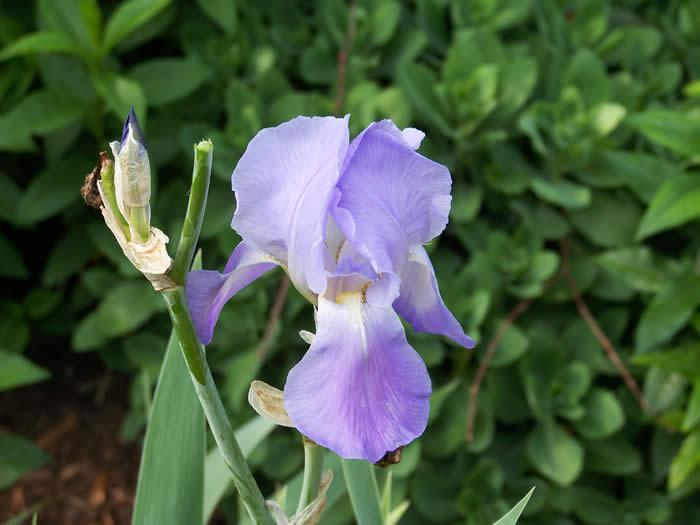The very beautiful bearded (a.k.a. German) iris is one of the finest of the very showy perennials widely grown in our region. Their exquisite blossoms earned them the title as “the poor man’s orchid”. Their blossoms come in almost every color you can imagine. There is one very destructive insect pest threat….the iris borer and a bacterial soft rot of the rhizomes that accompanies a borer problem. It can cause substantial destruction to the rhizomes and quickly destroy large sections of iris. This pest is typically attracted to older, over-crowded gardens.
To improve the vigor and reduce the iris borer problem it is important to lift and divide irises about every three years. The recommended time for our region is June through July.
Step 1. Begin by lifting the plants from the ground with a spading fork

Step 2. Remove the soil from the roots and inspect the rhizomes for any signs of rot or borers

Step 3. Discard very old and unhealthy rhizomes. Cut the rhizomes with a knife to an approximate length of a few inches. Allow the freshly cut surface of the rhizome to “suberize”. This is the beginning of the healing process and is done by letting the plants stay in the sun for a day or two.

Step 4. Trim the foliage back to about 5 inches and shorten the roots if needed.

Replant the newly divided rhizomes in a sunny well-drained soil. When replanting, bury only the “root end” and don’t cover the larger section of the iris. Don’t cover the rhizomes with mulch. Iris does best when the rhizome is exposed to the heat of the sun. After a few weeks, the plants will recover from transplanting and resume new growth.
